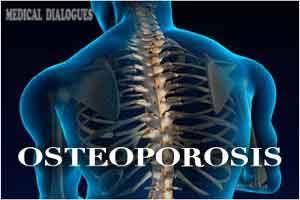- Home
- Editorial
- News
- Practice Guidelines
- Anesthesiology Guidelines
- Cancer Guidelines
- Cardiac Sciences Guidelines
- Critical Care Guidelines
- Dentistry Guidelines
- Dermatology Guidelines
- Diabetes and Endo Guidelines
- Diagnostics Guidelines
- ENT Guidelines
- Featured Practice Guidelines
- Gastroenterology Guidelines
- Geriatrics Guidelines
- Medicine Guidelines
- Nephrology Guidelines
- Neurosciences Guidelines
- Obs and Gynae Guidelines
- Ophthalmology Guidelines
- Orthopaedics Guidelines
- Paediatrics Guidelines
- Psychiatry Guidelines
- Pulmonology Guidelines
- Radiology Guidelines
- Surgery Guidelines
- Urology Guidelines
A closer look at osteoporosis medications mechanisms may improve outcomes

Osteoporosis is the primary cause of bone fractures in the elderly. Bone loss in this disease reflects an imbalance between the activity of bone-degrading cells called osteoclasts and bone-building cells called osteoblasts. Teriparatide, a recombinant form of parathyroid hormone, is currently the only FDA-approved treatment for osteoporosis that targets bone formation. This medication stimulates osteoblast activity and increases the lifespan of osteoblasts, but whether it also enhances the production of these bone-forming cells is unknown.
New findings from Henry Kronenberg's lab at Massachusetts General Hospital and Harvard Medical School suggest that while teriperatide treatment does increase the proliferation of osteoblasts, stopping treatment may have adverse effects. A study published this week in the JCI reports that the number of osteoblast precursor cells and their mature descendants increased in mice undergoing teriparatide treatment. When mice were withdrawn from teriparatide treatment, not only did osteoblast proliferation diminish, but the number of newly-formed fat cells, or adipocytes, increased.
These findings suggest that therapies targeting the parathyroid hormone receptor may enhance osteoblast populations by prioritizing osteoblast development over other cell fates, including adipocytes. The findings also offer insights into possible drawbacks of teriparatide therapy, indicating that the long-term consequences of brief treatment periods could outweigh the benefits.
For more details click on the link : Deepak H. Balani, Noriaki Ono, Henry M. Kronenberg. Parathyroid hormone regulates fates of murine osteoblast precursors in vivo. Journal of Clinical Investigation, 2017; DOI: 10.1172/JCI91699

Disclaimer: This site is primarily intended for healthcare professionals. Any content/information on this website does not replace the advice of medical and/or health professionals and should not be construed as medical/diagnostic advice/endorsement or prescription. Use of this site is subject to our terms of use, privacy policy, advertisement policy. © 2020 Minerva Medical Treatment Pvt Ltd